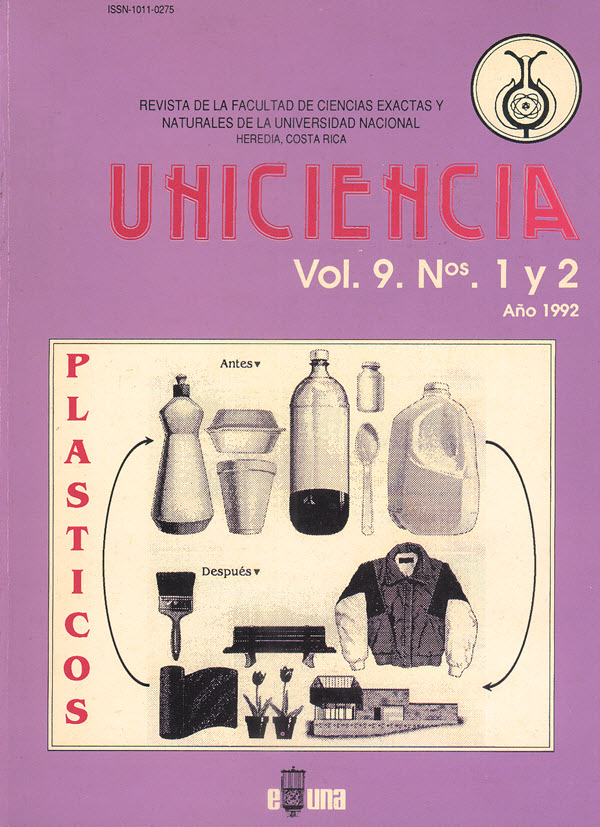Estimación de la radiación solar global incidente en superficies inclinadas (ING)
Keywords:
radiación, solar, superficies, inclinadasAbstract
Monthly averages of daily global radiation incident upon a tilted southfacing surface were computed from the available values of global, direct or diffuse solar radiation incident upon a horizontal surface for Limón, Fabio Baudrit, Palmar Sur and Santa Rosa. Also there were computed monthly averages hourly values of global radiation for tilt angles of 10 and 30 degrees, with experimental data in Heredia over the period from Abril to June of 1991.
In order to obtain the maximum output from a solar energy system, it is found by using different models, that the collector optimum tilt angle has to be in the range 5-30 degrees, for September, October, November, December, January and February, and 0 degrees for the other months of the year; with higher angles in January and December. Also it is found, by using experimental data in Heredia, that 0 degrees is the optimum hourly tilt angle for April, May and June.
The curves in this paper will be useful for large scale installations of solar collectors or photovoltaic panels in terrain with variable slopes in the geographic regions of the Central Valley (represented by Fabio Baudrit), North Pacific (represented by Santa Rosa), South Pacific (represented by Palmar Sur) and the Atlantic (represented by Limón).
Downloads
Published
How to Cite
Issue
Section
License
Authors who publish with this journal agree to the following terms:
1. Authors guarantee the journal the right to be the first publication of the work as licensed under a Creative Commons Attribution License that allows others to share the work with an acknowledgment of the work's authorship and initial publication in this journal.
2. Authors can set separate additional agreements for non-exclusive distribution of the version of the work published in the journal (eg, place it in an institutional repository or publish it in a book), with an acknowledgment of its initial publication in this journal.
3. The authors have declared to hold all permissions to use the resources they provided in the paper (images, tables, among others) and assume full responsibility for damages to third parties.
4. The opinions expressed in the paper are the exclusive responsibility of the authors and do not necessarily represent the opinion of the editors or the Universidad Nacional.
Uniciencia Journal and all its productions are under Creative Commons Atribución-NoComercial-SinDerivadas 4.0 Unported.
There is neither fee for access nor Article Processing Charge (APC)





